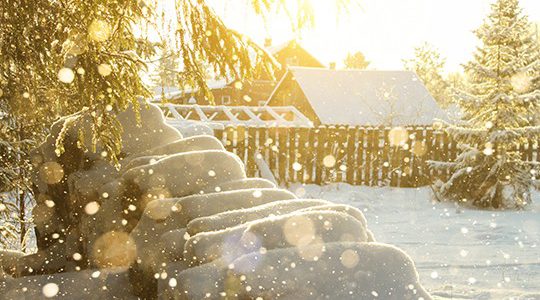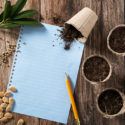Perhaps you are just glad that the weeding, watering and nurturing is behind you for another season and you can finally settle onto the couch for some good hockey. Where the garden is concerned: not so fast. My list below may provide the perfect excuse to get outside and enjoy the fresh late autumn air. In any case, you will ignore my suggestions at your own expense as I am just trying to help save your investment in a great looking garden next year.
1. Hill up your roses.
This is one of the last jobs around the garden before you batten down the hatches. Mound PRO-MIX Garden Soil to a height of 50cm around the base of each hybrid tea, floribunda, grandiflora and miniature rose bush. A plastic rose collar will help you do an even better job.
2. Rake the last of the fallen leaves off your lawn and into your garden.
Run over the leaves with your lawnmower before raking them onto the surface of the gardens. Worms will pull the leaves down into the soil come spring.
3. Clean your bird feeders.
Then fill them. We are never as inclined to clean our bird feeders in the winter. It is a nuisance. So do it now, using a stiff brush and soapy water. Then fill them with quality bird seed and note that the cheap stuff mostly ends up kicked out of the feeder onto the ground.
4. Feed your lawn.
The most important application of the year occurs in the fall, but only when you apply it. If you haven’t done it, it is not too late. Apply C-I-L Golfgreen Fall Lawn fertilizer now. Come spring your lawn will thank you by greening up quickly with much greater resistance to snow mould and brown-out. C-I-L Golfgreen is all that I use as it has the most sophisticated slow release formula on the market. And it is made in Canada by a Canadian company.
5. Wrap fruit trees with a plastic spiral.
Last winter we experienced record mice and rabbit damage, especially on young apple trees. A plastic spiral would have saved a lot of trees from permanent damage. For $3 or so they are one of the best investments that you can make in winter garden protection.
6. Turn your compost pile or the contents of your compost bin one more time before hard frost.
This introduces oxygen and speeds decomposition. You want that.
7.Store your seeds in a dry, cool place.
Your dahlia tubers and gladiola bulbs, too.
8. Dig and divide perennials.
Hosta plants that have been established for 5 years or more lend themselves to being divided up and replanted around the yard. This is true of monarda, day lilies, Shasta daisies and any plant with a fleshy root. If plants are getting too aggressive in your yard, now is a good time to remove the root to bring them under control. Think in terms of vinca minor (periwinkle), ajuga, snow-on-the-mountain (Aegopodium) which should really be called, “Don’t plant this or it will take over your world”.
9. Prune evergreens and plan on using some of the limbs for Christmas decoration.
This is true also for fruiting plants like trumpet vine, hardy holly, many roses that produce colourful hips, small fruiting crab apples etc.
10. Wrap burlap around cedars and evergreens that are exposed to wind.
Again, a reminder that last winter was the winter of all winters where plant damage was concerned. Two layers of inexpensive burlap around all evergreens will help to prevent snow damage (from the weight of snow), salt spray (from the melted snow on a nearby road, especially on the east side of the road) and sun scald in late winter (when the sun reflects off a clean, white layer of snow onto evergreen foliage). Me? I am planning my next garden vacation and making sure that my spring supply of seed catalogues are on order. I plan on watching lots of hockey in the mean time.



